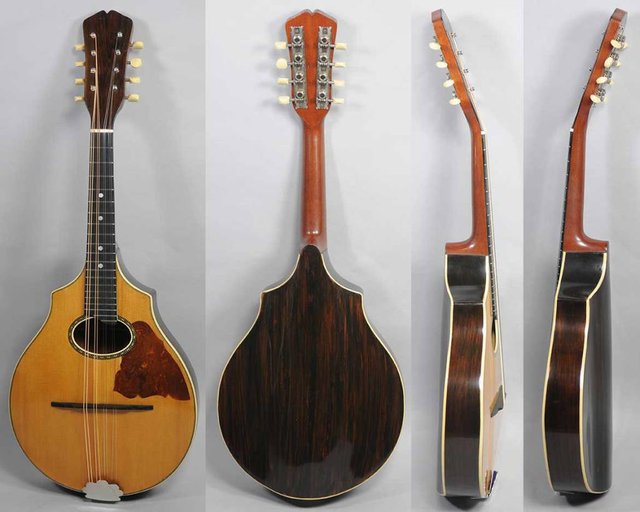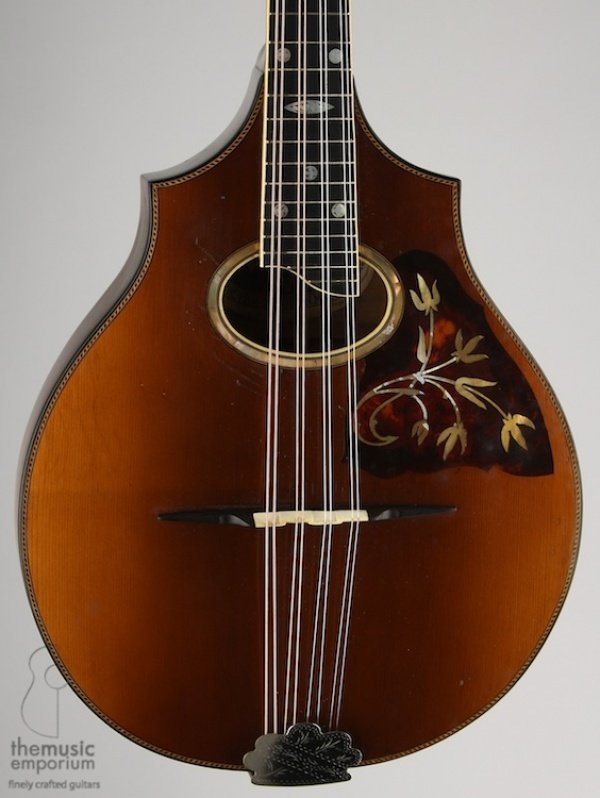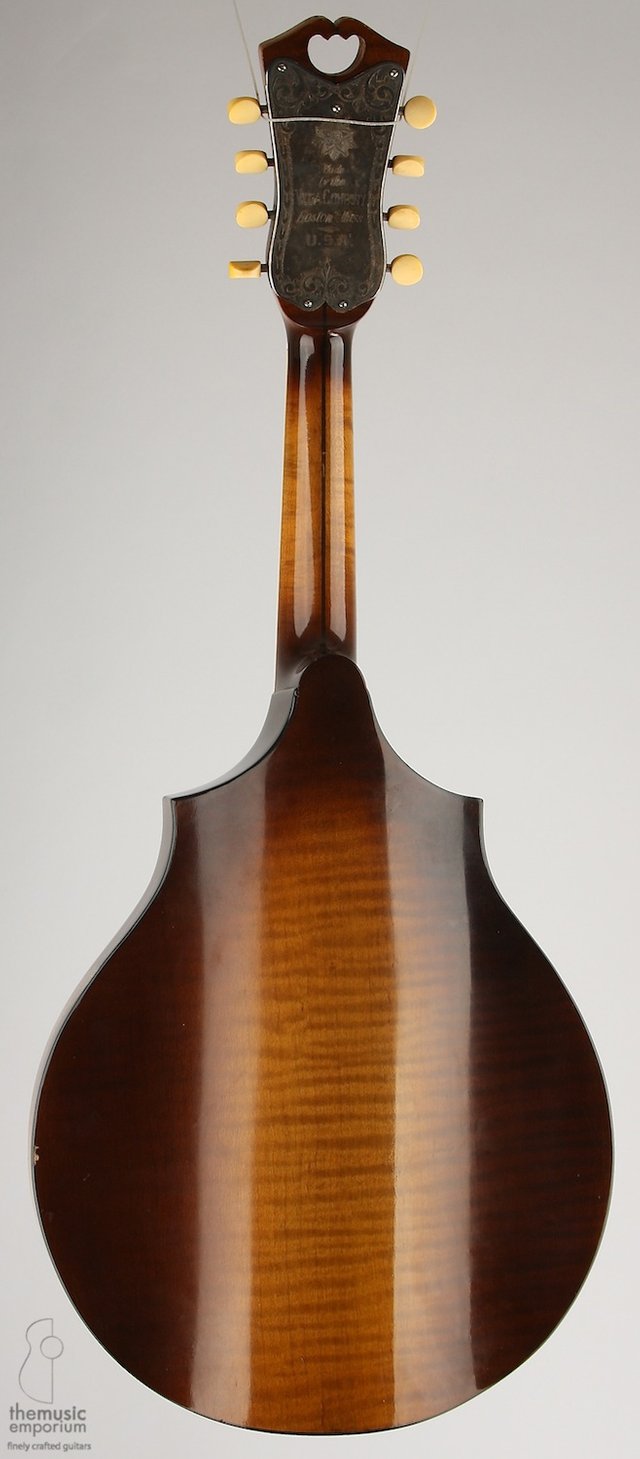
Photo credit: http://www.sprucetreemusic.com
The Vega Instrument Company was established in Boston in 1881 by brothers Julius and Carl Nelson, with John Pahn and John Swenson. They previously worked for guitar maker Pehr Anderberg, who made guitars for local instrument companies such as John C. Haynes. The Nelsons bought out the other associates at Anderberg, establishing Vega as a cooperative. The company primarily made guitars and mandolins, the latter of the Neapolitan bowl-back variety.
At the beginning of the 20th century, Vega went on a merger roll, buying A.C. Fairbanks Banjos in 1904, and Thompson and Odell in 1905. They continued to produce banjos under the name A.C. Fairbanks by Vega, then as Vega. Vega also ventured into brass instruments and purchased Standard Band Instrument Company in 1909.
In 1913, Vega took a creative turn in the production of mandolins. It introduced a “compromise” between the bowl-back and the Gibson-introduced flat-backs – the cylinder-back mandolin. The cylinder also applied to the other mandolin family instruments, and there was a limited number of cylinder-backed guitars produced. David L. Day, chief acoustical designer with Anderberg turned general manager at Vega, developed the cylinder and had it patented in 1913. The cylinder was found to increase the internal volume of the instrument. After the decline of mandolin production in the 1920’s, Vega focused on producing high-quality arch top guitars in the 1930’s.


Photo credit: http://www.musicemporeum.com
By the 1940’s and 1950’s, the overall quality of Vega instruments declined. It’s most notable instrument at the time was the long-necked banjo, which Pete Seeger played, as we as other musicians of the 1960’s folk revival. C.F. Martin purchased Vega in the 1970’s to capitalize on the popularity of its banjos. Martin licensed the Vega name to various American and international instrument makers, until Deering Banjos bought up the Vega name in 1989. To this day, Deering produces a line of Vega banjos.
The Vega name continued to appear on mandolins up to the 1980’s, until Deering Banjos acquired it. The mandolins were mostly low-end instruments made in Japan. One such instrument that is currently listed on Reverb.com is a metallic-looking Gray burst A-style mandolin with an asking price of $145. There are, however, many vintage Vega mandolins listed. The instruments include at least four banjolins, a mandolin and lute mandolin with cylinder backs, and vintage bowl and flat backs. The cylinder backs have asking prices in the early $1,000’s. It is not known if any other instrument maker has made, or attempted to make, an instrument with this unique design feature since Vega discontinued them in 1925.
Sources:
Ayars, Christine Merrick. “Contributions to the Art of Music in America by the Music Industries of Boston, 1640 to 1936.” H.W. Wilson, 1937.
Hi! I am a robot. I just upvoted you! I found similar content that readers might be interested in:
https://springfieldmandolin.wordpress.com/2017/01/23/115/
Downvoting a post can decrease pending rewards and make it less visible. Common reasons:
Submit